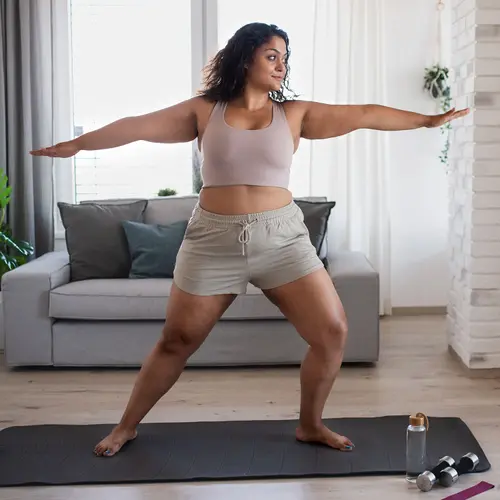The rotator cuff is a collection of muscles and tendons that keep the bones of your shoulder joint in place. An injury to this group is common, especially in people who work with their arms a lot like painters or construction workers. Usually, a portion of the cuff tears, which causes pain. This can happen at once as the result of a single injury, or the tearing can happen over time with repeated use. More advanced rotator cuff injuries may cause difficulty moving or weakness in the affected arm.
The main treatment for rotator cuff tears are exercises to strengthen the muscles. However, if your injury is severe, in some cases you may also need rotator cuff surgery.
Exercises to Help Rotator Cuff
When you’re recovering from an injury, conditioning is an important part of strengthening your muscles and staying flexible so that you can get back to a healthy lifestyle more quickly. It’s important to take these exercises slowly to avoid increased pain and to work closely with your physician or physical therapist to be sure you’re following the routine correctly and minimizing the risk of additional strain on your rotator cuff.
Pendulum
This exercise targets a group of muscles around your shoulder and promotes gentle, deliberate movement and strengthening, using only the weight of your arm for resistance.
Step 1: Lean forward and place your uninjured hand on a table or counter for support.
Step 2: With your injured arm hanging down, relax your shoulder muscles and move your body to let the arm swing forward and back like a pendulum. Repeat 12-20 times
Step 3: Then, swing it side to side.
Step 4: Then, rotate it in a circle.
Step 5: Repeat on the other side.
Perform 1-3 times a day for pain relief.
Cross-Body Stretch
This simple stretch helps with flexibility. You should feel it in the back of your shoulder as a gentle stretching that shouldn't cause any sharp pain.
Step 1: You can start sitting or standing.
Step 2: Lift your injured arm at the elbow with your unaffected arm.
Step 3: Pull the injured arm across your body toward your chest, stretching the shoulder.
Step 4: Hold the stretch for 10-20 seconds.
Step 5: Repeat on the other side if desired for a full and balanced upper-body stretch.
Overhead Stretch
You can easily practice overhead stretches at home with only equipment you already have around. Bending before reaching above your head slightly changes the angle of the stretch.
Step 1: Stand about an arm's length away from a sturdy object like a chair, counter, or table.
Step 2: Step 2: Place your hands on the surface. Keeping your arms straight, bend at the waist leaning forward so your body is lowering to stretch your arms overhead.
Step 3: Adjust your body in the stretch. You may want to take a step forward or backward.
Step 4: Hold the stretch for 10-20 seconds.
Step 5: Repeat 1 to 3 times.
Wall Press
Pressing your arm against something sturdy like a wall offers resistance and helps strengthen the muscles around your rotator cuff.
Step 1: Stand next to a door frame with your elbowat a 90-degree angle and your palm on the door frame.
Step 2: Roll a towel and lightly squeeze it between your elbow and body.
Step 3: Place a second towel between the palm of your hand and the door frame. Press your palm into the door frame while keeping the towel pressed between your arm and body. Hold 3-20 seconds
Step 4: If able to hold 20 seconds, repeat 3 times. If only able to hold 3 seconds, repeat 20 times.
Step 5: Turn around so the back of your hand is pushing towel against the door frame your outer arm is against the door frame or wall.
Step 6: Keeping the towel pressed between your arm and body, press your hand into doorframe. Hold for 3-20 seconds.
Step 7: If you're able to hold for 20 seconds, repeat 3 times. If you're only able to hold 3 seconds, repeat 20 times.
Standing Row
Step 1: Make a three-foot-long loop with a resistance band and tie the ends together.
Step 2: Attach the loop to a doorknob.
Step 4: Holding the band with both hands, step back away from door, allowing your arms to extend out in front of you toward the door knob.
Step 5: Pull band, with both hands, back toward your chest. Hold for 2-3 seconds.
Step 5: Keeping your arm close to your side, pull your elbow back.
Step 6: Return to your starting position with control.
Step 7: Repeat 2-3 sets of 12 reps.
Finger Walk
This exercise is sometimes called “wall climbing to the side,” and it mimics the climbing motion without requiring you to hoist yourself up.
Step 1: Face a wall, standing about 3/4 of an arms-length away.
Step 2: Touch the wall with the fingers of your injured arm.
Step 3: Walk your fingers up the wall like a spider, as high as you can, moving closer to the wall to stretch shoulder. Hold for 5 seconds.
Step 4: Allow your fingers to do most of the work.
Step 5: Lower your arm slowly back to the starting position.
Step 6: Repeat 2 to 4 times.
Step 7: Repeat by turning sideways and walking your fingers up the wall, stretching your shoulder.
Tip: Try to keep from shrugging your shoulder upward while you’re reaching.
Safety Considerations
You should consult your doctor or physical therapist before beginning an exercise program for rotator cuff injury. Before you do these exercises, warm up your muscles with a heating pad or a warm shower.
If you get sore from performing these exercises, use a cold compress or ice to relieve the pain and swelling. However, if you experience a sharp pain stop the exercises and let your doctor or physical therapist know.


